Housing supply, affordability and choice
In more and more areas of the region, housing is unaffordable for many people. A lack of supply and a limited choice of housing types and locations are limiting options.
This is contributing to homelessness, overcrowding, poor health and pushing more residential growth to outer areas causing the displacement of communities.
Region wide work continues to understand the constraints limiting supply and the required investment in infrastructure. This is particularly for three waters and transport that will be required to enable large-scale housing development in the region.
Initiatives
These are the housing initiatives in our 3-year work programme.
1. Regional housing plan
Answering the question of “what can we do collectively to increase housing supply in the short term (ie, next 5 years) and how should we structure ourselves to do that”?
2. Iwi-Māori housing plan
Focusing on those issues that are specific to iwi/Māori in the region with regards to housing.
3. Lower Hutt Structure Plan
Joint partner planning to accommodate a possible additional 5000 homes providing for a possible 11,000 people in the study area.
4. Levin Structure Plan
Joint partner planning to accommodate a possible 6300 additional homes providing for a possible 14,500 people in the study area.
5. Upper Hutt Structure Plan
Joint partner planning to accommodate a possible 4800 additional homes providing for a possible 10,500 people in the study area.
6. Johnsonville Masterplan
Joint partner planning to respond to increased housing demand in Johnsonville and surrounding suburbs arising from its proximity to a number of employment markets, and the lower hazard profiles in this area compared to many existing urban areas in Wellington City
7. Kāpiti-Horowhenua Planning
8. West-East access, housing, and resilience investigation
This project explores opportunities that an improved/new west-east multi modal connection would provide for transport (people and freight), resilience, movement within the region, housing and urban development uplift potential, and business areas. It provides the opportunity to future proof the region with alternatives for transport, urban development, and resilience.
9. Ōtaki joint planning pilot
Current issues exist in this pilot area that would benefit from collective planning such as an increasing demand for affordable housing and associated services and poor public transport access impacting opportunities for existing and future residents eg lack of public transport for rangitahi to get to employment either further south in Kapiti or north to Levin or Palmerston North.
10. National policy direction
This includes a joint Future Development Strategy under the NPS-UD requirements and a regional approach to the Regional Policy Statement (RPS) to ensure strong alignment between the WRGF and the RPS.
11. 50–100-year three waters strategy
Developing a 50-100-year regional three waters strategy to support anticipated housing growth which includes both changes to how we use water across the region and required upgrades to existing infrastructure.
Current Projects
Eastern Porirua Regeneration
This central government, local government and iwi project will provide – about 2000 state houses made warmer, drier, and safer, about 2000 affordable and market homes and 150 additional states houses. It will also provide great neighbourhoods and resilient communities. The project helps to improve the wellbeing of Eastern Porirua residents including new employment opportunities for local people and businesses. See poriruadevelopment.co.nz
Urban Plus
This is a Hutt City Council CCO. It utilises a range of housing approaches including for instance a recent partnership – He Herenga Kura, He Herenga Tangata, He Herenga Whenua – between Hutt City Council, Kahungunu Whānau Services, Te Rūnanganui o Te Āti Awa, and Council-owned organisation, Urban Plus Limited is the first of its kind in the country and sets out a framework for building and delivering warm, safe, and affordable homes for those in desperate need.
Te Kāinga, affordable rental programme
The Te Kāinga programme sees Wellington City Council (WCC) enter long-term leases with commercial building owners and developers to deliver stable and affordable rental housing for the city’s essential and key workers, targeting those in essential skills occupations, have moderate incomes and do not own a home. WCC has 339 apartments in the pipeline. The first project, Te Kāinga Aroha, welcomed the first tenants on 5 March 2021 and provides 52 apartments in the Wellington CBD. The building was converted from office space to one, two and three-bedroom units. The Council recently set a target for the programme of 1000 units completed or under contract in the next 5 years.
Kenepuru Landing
This is a partnership between a private development and Ngāti Toa where both partners have committed to creating a suburb that meets the needs of a diverse community with a heavy emphasis on amenities, public transport, and ease of living. On completion, the new suburb will include approximately 700 homes projected to house over 2000 people.
Kāinga Ora developments
Kāinga Ora has over 7,500 public homes across the Wellington region and is working with councils, iwi and the community in renewing, redeveloping and regenerating its portfolio to plan for growth and improve the quality of housing for its tenants.
Future Projects
These projects are at the planning stage and are likely to be implemented in the future
Kāinga Ora pipeline
Under the Government’s Public Housing Plan, around 470-690 public housing places and around 170 transitional housing places are expected to be delivered by 2024 in the region. Investment is planned and proceeding across a range of projects including key projects such as Porirua Development and developments at Rolleston and Arlington in Mount Cook which will deliver around 380 much needed homes in the central city, including 60 supported living homes.
NPS-UD medium density plan changes
These are all under development. Fast tracking these plan changes would increase the speed at which houses could come to market.
RiverLink
An integrated urban development (projected to provide 1300 houses/apartments), transport (roading and multimodal) and resilience project in Lower Hutt.
Let’s Get Wellington Moving – urban development opportunities
Strategic opportunity to support intensification/high density development on the future mass transit and active travel corridor from the CBD to Newtown and Kilbirnie. See lgwm.nz
A range of greenfield developments in early stages of planning
Some examples include Lincolnshire Farm (2,000), Upper Stebbings/Glenside West (650).
A range of greenfield in more advanced stages of planning
Some examples include Porirua Northern Growth Area including Plimmerton Farm (3800 homes – a resource consent is about to be lodged for stage 1) and Tara-Ika (2,500 – which is nearing the hearing stage).
Establishing a Regional Developers Forum
To provide a regional view of the development opportunities available and the longer-term planning. To encourage developers into areas they have not developed to date.
Infrastructure Acceleration Fund
Taking a regional approach to the Government’s Housing Acceleration Fund in line with the WRGF.
Examining options for a regional housing entity
As part of the Regional Housing Plan to identify how we could jointly structure ourselves to get better and faster housing results.
Sign up for updates.
Quick Links


